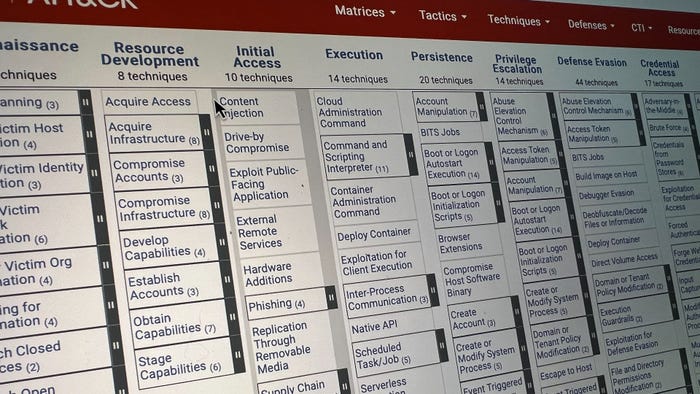Security Hiring Plans Remain Constant Despite PandemicSecurity Hiring Plans Remain Constant Despite Pandemic
Although we saw workforce gains this year, 56% of businesses surveyed report staff shortages are putting their organization at risk.

Enterprise plans to increase cybersecurity staff remain constant despite the economic pressures caused by COVID-19. While the workforce gap is smaller this year, more than half (56%) of businesses say staff shortages continue to put their organization at risk.
To compile the 2020 (ISC)² Cybersecurity Workforce Study, experts surveyed 3,790 security pros at all levels from small, medium, and large organizations across North America, Europe, Latin America, and the Asia-Pacific region. Thirty percent report they have "the right amount" of dedicated security staff, 42% say they have a slight shortage, and 22% report a significant shortage.
While the global workforce gap has shrunk — from a shortage of 4.07 million to a gap of 3.12 million — experts say several factors explain this. Despite this decline, data suggests employment must grow by 41% in the US, and 89% worldwide, to meet organizations' needs.
The study was conducted in late April 2020 into mid-June, a time at which businesses were undergoing drastic change due to the COVID-19 pandemic. Part of the reason behind the smaller workforce gap is a lack of demand for cybersecurity practitioners. Researchers report a "sharp downshift" in the estimated number of US businesses investing in security pros. While large businesses continue to invest in security talent, investment levels are down from 2019.
There is also a greater supply of security practitioners year-over-year, likely driven by a strong base of industry migration. More organizations are increasing their supply of security talent by investing in their current base of professionals, the report notes.
(ISC)² CEO Clar Rosso, who isn't surprised by the smaller workforce gap, thinks the timing of this year's survey had an influence on the results. Now, respondents may have different answers.
"It was mostly Q2 of this year when organizations globally were contracting and saying 'I have to preserve cash flow,' 'I'm freezing all my open positions,' 'I'm not hiring,' … so it doesn't surprise me, what appears to be them treating cybersecurity like they would any part of the business," Rosso explains.
When companies are in crisis, their top priority is preserving cash and addressing basic needs: Do employees have the tools they need, can they connect? An (ISC)² study conducted earlier this year found 47% of security pros were taken off security duties to help with IT-related tasks such as equipping a mobile workforce.
Back in April and May, most organizations were focused on keeping their business running and transitioning employees to remote work. In North America, 27% of respondents had less than a day to transition employees into remote work and secure their transformed IT environments. Nearly half (48%) in the same region had less than a week; only 17% had more than seven days.
Now, with the scramble to remote work behind them, companies have begun to reexamine their security posture and the investments needed to make long-term remote work possible.
"I think as time goes on, and even right now, you'll find that businesses are thinking more about 'Am I secure?' 'Is my database secure?' 'Am I making all those cybersecurity considerations that I should to run my business?' … I think we're going to see that evolving," Rosso adds.
As Hiring Returns, Which Skills Are in Demand?
Most respondents to (ISC)²'s survey say their own job has not been affected; however, some report their hours, salary, or full-time status has been affected as a result during the pandemic.
However, despite COVID-19 and related economic pressures, organizations' plan to grow their security staff is consistent with previous years. Nearly half (48%) of businesses in 2020 plan to increase their staff, compared with 50% in 2019 and 49% in 2018. Nearly 40% plan no change, which is fairly consistent with 32% in 2019 and 37% in 2018. Only 15% of organizations plan to decrease their security staff, compared with 12% in 2019 and 10% in 2018.
As it stands, companies seem to have the percentage of security skills they describe as ideal. Most in-demand: security operations, which makes up 21% of current security team roles, followed by security administration (16%), risk management (14%), compliance (13%), secure software development (11%), and operation technology security (ICS) (11%).
How are today's candidates educated? (ISC)² data reveals 41% have a bachelor's degree, 35% have a master's degree, 8% have an associate's degree, and 8% have a high school diploma. Nearly half (49%) have a degree in computer and information sciences; 20% have an engineering degree, and 10% have a degree in business. Most (72%) are male.
"I think when you're dealing with an environment that we're dealing with, where we have this massive gap, we can't expect everyone we hire come out of college with a degree in cybersecurity, or even computer science," says Rosso.
She encourages organizations to take a closer look at the core competencies cybersecurity professionals have and look for people within the business who already possess those skills.
"Who are those people who understand risk and risk mitigation, they work well with others, they're creative problem solvers and critical thinkers, they're analytic. … I think you'll find there are a lot of different professionals like that and they may be right for moving into a cybersecurity career," Rosso adds.
About the Author
You May Also Like




